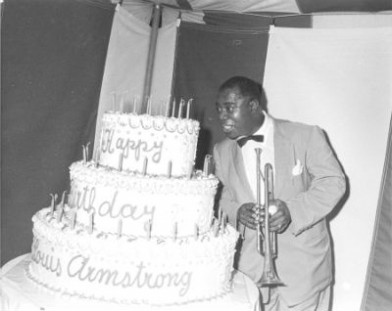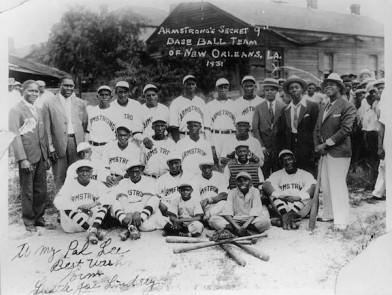To say Louis Armstrong had a complex relationship with his hometown of New Orleans is putting it mildly.
Satchmo: His Life in New Orleans, a new exhibit at the Old US Mint, aims to provide a comprehensive look at the cultural, political, and institutional challenges faced by New Orleans’ most famous musician.
The exhibit is an unprecedented collaboration between the Louis Armstrong House Museum in New York City and the Louisiana State Museum.
As part of the annual Satchmo Summerfest, the exhibit will coincide with the 100th anniversary of Armstrong’s first professional gig at Henry Ponce’s in New Orleans in 1915.
“We are honored to partner with the Louis Armstrong House Museum in presenting this exhibit on one of the state’s most notable people, Louis Armstrong,” Lt. Governor Jay Dardenne said in a press release. “Few musicians have had the impact on not just jazz, but all music, that Louis Armstrong had. His life in New Orleans had a part in how he viewed the world and interpreted it in his playing.”
Satchmo: His Life in New Orleans presents Armstrong’s early influences, including his mother, Mayann, who raised Armstrong by herself, the Russian-Jewish Karnofsky family, whose friendship with Armstrong began in his youth, his first music instructor at the Colored Waif’s Home, Peter Davis, who made Armstrong leader of the home’s brass band six months after he joined the group, and cornet legend Joe “King” Oliver, who was Armstrong’s mentor and biggest influence.
Most of the 70 artifacts and items in the exhibit are from the research collections of the Louis Armstrong House Museum and have never been exhibited in New Orleans. Highlights include Armstrong’s last Selmer trumpet that accompanied him for his final visit to New Orleans in 1968, which will sit beside his first cornet from the Colored Waif’s Home currently on display at the Old U.S. Mint.
“We are thrilled to partner with our friends in New Orleans at the Louisiana State Museum and Satchmo Summerfest by Chevron to present this engaging exhibition. Visitors will be moved by the story this exhibition tells and we hope that when they find their way to New York City, they visit us at Louis’ house, perfectly preserved as a National Historic Landmark and a New York City landmark,” Louis Armstrong House Museum executive director Michael Cogswell said.
Though Armstrong, born in New Orleans in 1901, left the city for Chicago in 1922 and eventually made New York his home, he kept New Orleans close to his heart. In letters, interviews, private recordings and unpublished manuscripts, he reflected on his life in New Orleans.
A prolific prose writer, Armstrong considered issues well beyond music in his narratives, including race relations in New Orleans.
The exhibit includes dozens of pages from different manuscripts he wrote, including a reproduction of an entire four-page letter on being named “King of the Zulus” in 1949—the realization of a boyhood dream that hurt his standing among African-Americans at the time—and his lament on segregation laws prohibiting his integrated All Stars band from performing in the city.
The exhibit also features recordings of Armstrong’s voice from his vast collection of private audio tapes, as well as video excerpts from television interviews.
Satchmo: His Life in New Orleans will be displayed until Jan. 15, 2016. The Old U.S. Mint is open Tuesdays through Saturdays. For more information, visit LouisianaStateMuseum.org.





